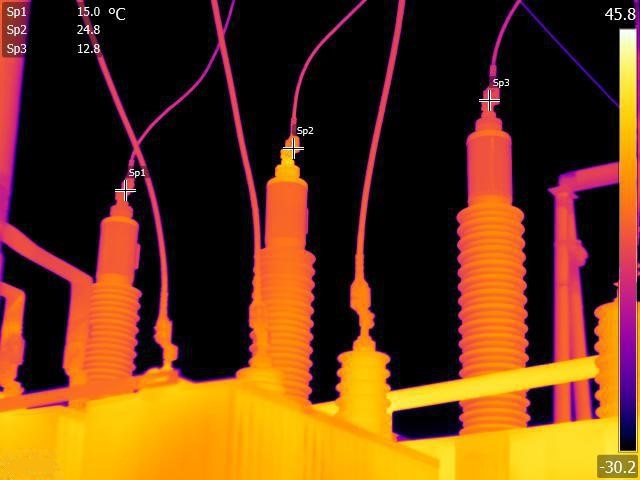Tips for choosing the perfect Infrared Thermal Scope for Hunting Expeditions
Infrared technology and the traditional use of a hunting night vision scope come together in what is known as a thermal scope. The main advantage is that it makes your target more noticeable, making it easier to see in low-light or dark environments.
Infrared light is captured using a thermal scope, which then produces thermograms. Cold objects are seen as black in a thermal picture, whereas those that are hot are shown as light. For the simple reason that it displays different temperatures in each area. Compared to inanimate items like plants and buildings or even water, which don't generate heat, animals, humans, and motorized machinery give out a lot of heat.
Want to learn more about what the best thermal scopes look like? This is your lucky day. Let's find out.
What is the mechanism of action of thermal scope?
To an outsider, it may seem as if magic is at work. You can learn a great deal about the area you're observing using a handheld or head-mounted gadget, or even with one that can be connected to a rifle.
The observational findings are shown graphically as thermal signatures of things. The infrared cameras at the device's core have improved dramatically in quality and sensitivity in recent years. The manufacturing process of infrared optical image sensors, a core component, was enhanced, which accounted for the increase. Thanks to this, you may now use adequate but surprisingly portable equipment.
The range of vision is a key performance measure for many gadgets. To choose from, you have the choice of a regular optics set (with a viewing angle of 23 degrees), a telephoto optics set (with a viewing angle of 6 degrees), or a wide-angle optics set (with a viewing angle of 48 degrees). Without delving into the specifics, we may make the following inference: Unlike regular cameras, a thermal imager's ability to measure an object's temperature signature is unaffected by the viewer's proximity to the target, which results in a clearer picture.
What new possibilities does this technological advancement provide you with? Limitless. You need a little to see the thing at night, in the snow, the rain, or the fog. The temperature of the item must be more than 0 degrees Celsius. The technician will take care of everything from here on out. And the resulting picture, whose brightness varies as a function of temperature, will be of great quality and valuable detail.
Using a thermal infrared scope, like TS450, allows users to locate heat signatures in low-visibility conditions such as rain, deep/tall grass, fog, dust, and smoke, day or night. In addition, the possibility of endlessly growing our capacities is a major selling point for this technology.
Top Tips While Choosing Best Thermal Scopes
Materials
The thermal imaging scope's lens, in particular, requires that you pay great attention to the materials it was made from. Since the camera's picture resolution relies on the strength of heat signals from targeted objects, the lens material must be heat-conductive. As a result, thermal infrared scope lenses are never made from glass.
Germanium is the most popular choice when making the lenses of a hunting night vision scope. Germanium may be treated to give it the inherent qualities of glass, allowing the camera lens to conduct and capture the greatest heat from objects to recreate flawless images faithfully. Zinc selenide is another but less typical material utilized in lens production.
Resolution
The resolution of a thermal scope determines how sharp and distinct the images you see through it will be. When one-factor increases, the other decreases; in this case, more resolution means better picture quality.
Simply said, if you go with a thermal scope with a high-resolution rating, you'll be able to view pictures and graphics that are crystal clear and realistic.
In addition, a high-quality thermal infrared scope enables you to zoom in on your subject without degrading the clarity of the overall picture.
Battery Life
The most reliable thermal scopes use batteries. Typical thermal scopes employ lithium-ion batteries, allowing up to eight hours of continuous usage on a single charge, and are found in the most popular models.
Some versions come with built-in rechargeable batteries and cannot be swapped out, while others use disposable battery packs.
Zooming in and enlarging
A function that allows you to zoom in on a distant subject and see more detail by enlarging the picture is called magnification. There are, however, evident downsides to this aspect that might compromise picture quality. To provide one example, increasing the size of a representation might cause it to lose quality, becoming pixelated or otherwise unrecognizable.
This difference may be mitigated by purchasing a device with optical and digital zoom capabilities. When using optical zoom, the image's resolution is maintained at a high level when the image is enlarged. However, the picture quality suffers when digital zoom extends the view.
Varying Color Schemes
You may choose between a thermal hunting night vision scope that is monochromatic or multicolored. Grayscale heat maps show and differentiate between different types of items, with lighter or brighter outlines often representing living things. A colored heat map, on the other hand, displays the various features of a given environment by colorizing them in accordance with their temperatures (or heat signals).
Targeting Methods Using Crosshairs
The reticle, which is the crosshairs on the lens, allows for more precise focusing. Thermal scopes come with either a single dot reticle or four crosshair lines. If you do most of your hunting at night, when the thermal sight will be put to good use, you should choose a reticle with four lines, the inner two thicker and the outside two finer.
Refresh Rate
The refresh rate also contributes significantly to sharpening the picture. Available thermal scopes use either a 60 Hz or 30 Hz refresh rate. You should invest in scope with a 60Hz refresh rate if you want to move about while zooming in on fast-moving targets.
Conclusion
It's important to use the criteria listed above while deciding between five or six popular types of best thermal scopes. We have a few selections for you on our website! Make sure to browse through, and we are sure you will find something of your choice.













.svg)


.jpg)
.png)

